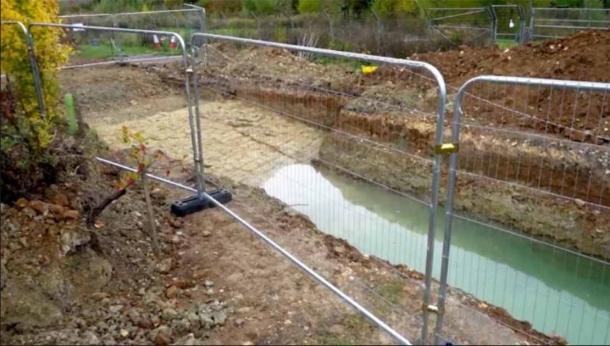Unique 2,000-Year-Old Roman Road Accidentally Uncovered in Worcestershire
What is thought to be a Roman road, potentially dating back 2,000 years, has been uncovered in a field in Worcestershire in the UK.
An expert has assessed it to likely be a cobbled Ford, and the construction was discovered accidentally by ground workers near Evesham. If it is in keeping with the Roman history in the area, it was built in the 1st century AD.
Experts believe this is the first of its kind in Britain and could be the finest example of its type in the country.

Parallels Between Pompeii, Rome, and… the Evesham Roman Road?
“At the moment everything is ticking the boxes for it to be Roman. But it feels too good to be true, so we are keeping an open mind,” explained Aidan Smyth, Wychavon Council’s archaeology advisor, when discussing the possibly-Roman road.
“If it turns out to be medieval then it could still be considered to be nationally significant as nothing similar has been found in Britain to date,” continued Smyth. “If it is a 1st-century Roman structure, with its only known comparisons in Rome and Pompeii, then it is the only one of its kind in Britain to date making it nationally important.”
The road discovery made near Severn Trent during routine waterworks measured 10 by 2.9 meters (32 by 9 ft). The find was uncovered on the banks of the river where a Roman-era villa and complex was uncovered just four years ago. It was constructed using the traditional Roman technique – basically with walls that used large stones laid in bands.

A Case of Wishful Thinking… or an Actual Roman Road
As Aidan Smyth mentioned above, known parallels have only been found in Rome and Pompeii, reports The Metro. The ford, which was basically a shallow crossing point for traversing a river or stream, crosses a brook and has ruts in the stone, indicative of it being used by carts for a long time. The stonework is “absolutely perfect” and “ticks every box for being Roman.”
One of the more visible obstacles has been the lack of other archaeological finds from comparable eras, such as coins or pieces of pottery.
Scientists are adopting a method called optically stimulated luminescent testing, for which they will cut off a portion of the Roman road. This method will help measure the last time the sediment was exposed to sunlight, an effective but extremely lengthy process that will require cutting off the road for months to prevent deterioration.

Roman Britain and Worcestershire’s Romanic Past
When Britain came under Roman control in 43 AD due to Emperor Claudius’ aggressive campaign, the county of Worcestershire did not exist.
It was under the occupation of the Iron Age Dobunni tribe, a territory through which the Roman army passed in the 40s and 50s AD as it was pushing west to reach the River Severn en route to Wales, writes Deborah Fox for the Worcestershire Museum.
The native population was quickly subjugated, colonized, and subjected to a new way of life. Worcestershire is fertile ground for important archaeological finds as Worcester was possibly the site of the Roman town of Vertis.
The Romans heavily relied on building roads and forts as part of their conquest strategy, and since the 1950s this area has been ripe with archaeological finds. Forts at Grimley, Blackstone, Perdiswell Hall, and Kemerton have all been found.
A fort was assumed to exist at Worcester in the Cathedral area, but no structural evidence has been found till now to back this claim. In the 1960s, several excavations conducted pointed to the fact that Iron-Age defenses were re-dug in this conquest period, along with artifacts with military associations like brooches and coins.
In 2016, a massive aerial flood map survey revealed long-lost Roman roads across the length and breadth of Britain. “Often there are vague indicators of a route but not enough evidence to be sure,” explained Hugh Toller, one of the archaeologists working on this project. “With lidar, we can spot any “aggers” – a Roman embankment or rampart. If you find 2km or 3km of these running dead straight, there is nothing it can be except a Roman road.”
This perhaps remains an effective tool to utilize in excavations such as this to ascertain the viability of a Ford as a Roman road. The results of the optically stimulated luminescent testing method are eagerly awaited.
